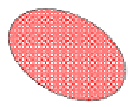Information Technology Reference
In-Depth Information
The case of multi-label classification increases the challenges involved in con-
sistent annotation or labeling of the data used for training and testing. Labels can
be ranked, nested, statistically and logically related and simultaneously occur, in
many cases these connections are not known in advance. Various methods of mul-
ti-label classification refer to the relations between labels, because in various
modalities and applications these relations may affect the number of labels, and
the classification method in use.
Note: The term multi-label classification sometimes refers to co-occurring sets
of features and of feature values that construct high-level features, or to different
sets of values of features, used as an intermediate level of abstraction prior to the
actual classification, and serve as input to classifiers such as Hidden Markov
Model (HMM) classifiers and the like. This chapter does not approach this kind of
problems, unless the output of the entire system comprises the assignment of mul-
tiple labels (concepts) to a sample.
(a)
(a)
(b)
(b)
Fig. 3
A schematic description of the relations of a class to the other classes in the two pa-
radigms of multi-class classification based on binary classifiers: (a) one-against-all, (b) one-
against-one
6 Multi-class Classification
Multi-class classification refers to classification methods in which there are more
than two classes to represent the data, yet the classification process associates each
sample with a single class-label. One approach to multi-class classification is to
dissolve them in to multiple binary classifiers. The second approach aims to
directly solve the multi-class problem. This section reviews some of the more
commonly used approaches and a few of the more recent methods suggested for
multi-class classification.


























































































































Search WWH ::

Custom Search